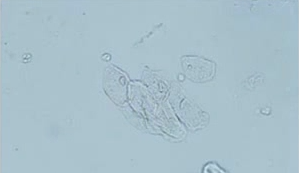Normal urine is yellowish having a color of pale to amber. The white stuff that may be found or seen in urine could be things like particles of mineral compounds, tissue that has been eroded from the uterus lining, an infection in urinary tract, or dissolving particles of kidney stones.
Therefore, depending on the cause, you may want to seek medical help especially if you are experiencing pain, fever, and abdominal discomforts. Sometimes, the cloudy or white stuffy in urine may not be something serious. It just needs changes in lifestyle and the problem is resolved. In other cases, it may be an illness or disease that needs treatment.
What causes the white stuff you see in urine
There may be different explanations as to what causes the white stuff or particles suspended in urine. The urinary system works to clear toxins and chemicals from the body and creates a balance in amount of fluid or water in body. The amount of fluids a person takes, that’s water may determine the concentration of urine.
A common cause of white stuff seen in urine is presence of mineral compounds like phosphates. A urinary tract lining may detach and come out as particles in urine that look whitish. Whenever there is an infection in the urinary tract, an individual may notice the white stuff. Candida, parasites, and bacteria may be the culprit in this case.
Normally, urine does not contain viruses, bacteria, or fungi— it’s just fluids and waste being released from the body. Whenever there is an infection with bacteria or Candida, it may cause a cloudy appearance in urine. You may see white tiny particles that are suspended in urine. Yeast is found in vaginal tract but in small amounts. This is normal and shouldn’t be something to worry about.
However, sometimes there can occur overgrowth of the yeast resulting in monilia infection. This happens whenever there is change in pH within the vaginal tract. A yeast infection presents in form of increased vaginal discharge, presence of white, cottage cheese like discharge coupled with itching and burning sensation.
Bacterial vaginosis may occur causing an increased growth of bacteria in vagina. In this case, a person will have foul smell coming from vagina. The discharge is gray or white and may be accompanied by itching. When not treated, bacterial vaginosis may advance and create other problems like pelvic inflammatory disease.
Issues with the kidneys such as kidney stones may be another possible cause. Kidney stones are made up of substances like uric acid, calcium, or phosphates. These substances may dissolve in urine and cause it to appear cloudy or with white suspensions. Things like polyps and cancer affecting the bladder may bring about the white suspensions you see in urine.
Treatment
When you have white stuff in urine accompanied by fever and pain, you need to seek immediate help from a doctor. It may indicate a disease or infection, which should be diagnosed and treated before it spreads. Infections in urinary tract can spread to other parts like the bladder and kidneys and therefore, should be treated as soon as possible.
When you first see white particles appearing in urine, make a trip to a doctor’s office. The doctor will examine your case and possibly take urine samples to conduct urinalysis test to determine the cause of the condition. The test can confirm whether it is chemicals, conditions, compounds, or infections causing the white stuff.
Depending on the cause of the white suspensions in urine, appropriate treatment is administered. For example, if it is a bacterial infection, antibiotics may be given. In case of kidney stones, they can be treated by dissolving them with use of medication or increased water intake.
The presence of white clumps in your urine accompanied by signs and symptoms like itching sensation and pus may indicate that you have an STD. Treatment for STDs should be done soonest possible to prevent the spread of the diseases.
You need watch changes in your urine over time and when you notice something suspicious such as prolonged change in color or concentration, and white appearance or suspension of particles, you should seek medical help. These may be telling you more about your health such as kidney infections, urinary tract infection, vaginal infections, or infection in bladder.

